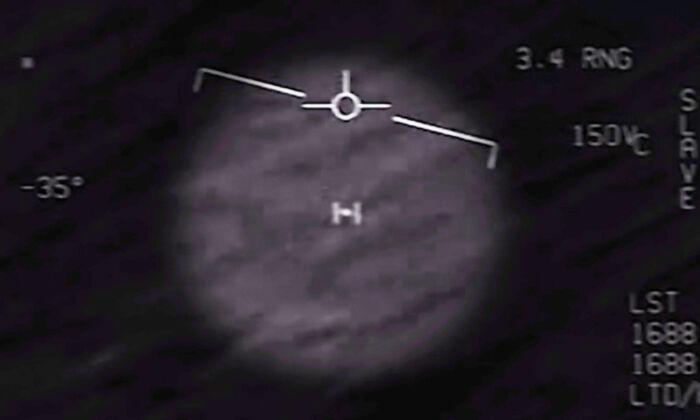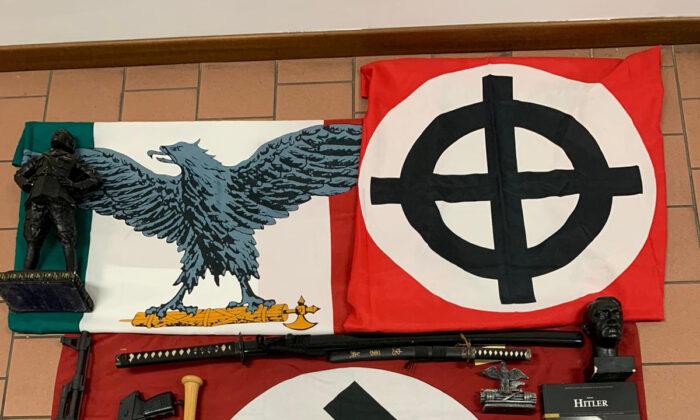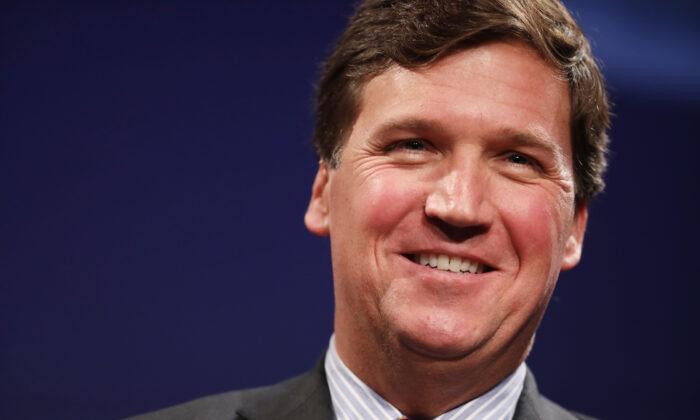Naval Intelligence Deputy Director Scott Bray said on May 17 that the Pentagon’s unidentified aerial phenomenon (UAP) task force has received some 400 reports of UAP sightings, none of which involved known evidence of extraterrestrial life.
Bray’s remarks came during a House Permanent Select Committee on Intelligence hearing—the first congressional hearing into UAPs, more commonly known as UFOs, since 1969. He said that the 144 reported unidentified aerial sightings from 2003 to 2021 has ballooned to roughly 400, attributing the spike to more people being willing to come forward since the release of the UAP task force report in June 2021.
When questioned by lawmakers, Bray said none of the roughly 400 sightings have involved evidence of extraterrestrial life.
“We have no material; we have detected no emanations within the UAP task force that would suggest that it’s anything non-terrestrial in origin,” he said.
The Naval Intelligence official explained that many people mistake sensory phenomena for extraterrestrial aircraft.
To illustrate his point, he showed committee members a video of what appeared to be triangular-shaped aircraft hovering in the atmosphere. Those mysterious objects turned out to be visual distortions in detection instruments, he said.
“It’s simply that the light source resolves itself through the night-vision goggles onto the SLR camera as a triangle,” he said.
That said, scientists and national security officials cannot explain some other sightings, according to Bray.
“I can’t point to something that was definitely not man-made, but I can point to a number of incidents that remain unresolved,” he said.
Most of the unsolved questions are due to a lack of data, Bray said.
“There are many instances where there’s a little bit of data, and we can’t make any inferences,” he said.
However, he acknowledged a “small handful of situations” that defy officials’ understanding of aviation.
“There have been indications of flight characteristics or signature management that we wouldn’t expect,” he said, explaining that “signature management” is an aircraft’s ability to hide the source of its propulsion.
“In some cases, there’s some degree of something that looks like signature management from the UAP,” he said. “But I would say there are a number of events for which we don’t have an explanation.”
Bray said the Pentagon is not aware of any other country with the technology to fly an aircraft without discernable means of propulsion.
Rep. André Carson (D-Ind.) suggested that the lack of organization within the Pentagon could account for some of the unexplained sightings. He said Congress passed legislation last December to create the Airborne Object Identification and Management Synchronization Group [AOIMSG].
However, “the group does not even have a named director,” Carson lamented.
Carson also said it is crucial for Pentagon officials to communicate with all departments to make sure the U.S. government isn’t “chasing its own tail” by investigating its own secret aerial technology.
Ronald Moultrie, the Under Secretary of Defense for Intelligence and Security, agreed with Carson. He said policies are in place to “make sure we’re not reporting on something that may be a developmental platform that the U.S. is using to test or performing a mission.
“We have that in place, because we want to ensure we’re protecting sources and methods.”
The historic congressional hearing lasted roughly two hours before going into a session closed to the public. Committee leadership called for more transparency from the U.S. government about UAPs.
“UAP reports need to be understood as a national security matter, and that message needs to go out across DOD, the intelligence community, and the whole of the U.S. government,” said committee chair Adam Schiff (D-Calif.). “When we spot something we don’t understand or can’t identify in our air space, it’s the job of those we entrust with our national security to investigate and report back.”
“The last time Congress had a hearing on UAPs was a half-century ago,” said Carson, chair of the Intelligence Counterterrorism, Counterintelligence, and Counterproliferation Subcommittee.
“I hope that it does not take fifty years for Congress to hold another because transparency is desperately needed.”




